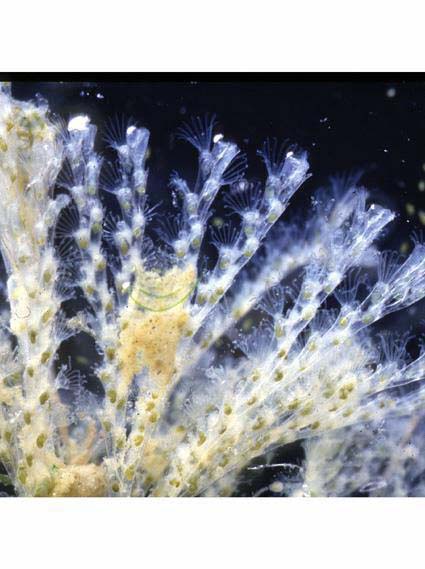.
Paddling in tranquil pools with net
poised or snorkelling amongst the gently waiving laminaria fronds during
the elusive heat of summer are but a dream during the strong gales of winter
time. Most would say that itís a time for microscopy indoors, and so would
I, until I chanced upon a booklet by Peter J. Hayward called Animals on
Seaweed (ref. 1).
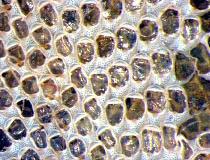
Above and right. Bryozoans from the genus Electra, showing the delicate calcified tissue. The other images below are bryozoans mainly from the British Isles. |
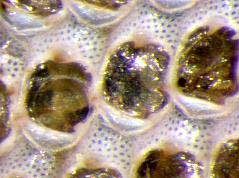 |
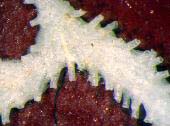 Its
full of good ideas, but what gripped me was the riches afforded by the
holdfasts of the great seaweeds. Many of them have a swollen base behind
the point where they are rooted into the sub-stratum. The stem is often
swollen and within this cavity is a protected El Dorado for creatures great
and small. During the winter gales, even the most titanic growths are uprooted
and cast up on the rocks.
Its
full of good ideas, but what gripped me was the riches afforded by the
holdfasts of the great seaweeds. Many of them have a swollen base behind
the point where they are rooted into the sub-stratum. The stem is often
swollen and within this cavity is a protected El Dorado for creatures great
and small. During the winter gales, even the most titanic growths are uprooted
and cast up on the rocks.
After deposition, many of the motile
creatures certainly make a break for it and disappear into the sub-littoral
zone, but those that are stuck to the walls of the cavity have no option
but to hang on where they eventually dry out and die. The iridescent shell
of Patina can frequently be found but the best represented group
of animals is that of the Bryozoa: The sea mats can be seen in great variety.
They can be freed with a scalpel, then cleaned in hydrogen peroxide for
a couple of days and just as skeletons make aesthetically very pleasing
objects for the low powers. The genus Electra is well represented
on the South coast and it will attempt to encrust a wide variety of objects.
The calcified matrix is finely ornamented with lace-like frills and around
the apertures are protective spines. There are often so many sea mats that
a text book is really required to sort them out. Once again Mr P.J. Hayward
and a colleague Mr. J.S. Ryland have come to our rescue with a series of
books, one for each of the major groups (ref. 2).
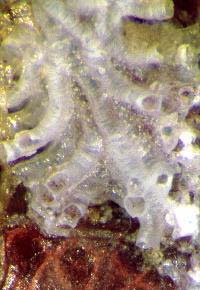 |
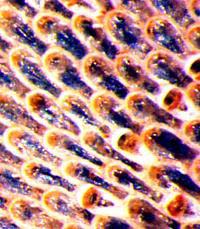 |
Most of the colonies require only dry mounting but some of the more delicate growths which can be found encrusting the finer seaweeds, may be washed, desiccated and mounted in Canada balsam where their finer points can be appreciated.
At this inhospitable time of the year the tide marks of the sheltered bays also become enriched with detached bryozoan encrustations and also spicules from sponges and suchlike colonies broken by the heavy seas over the off-shore reefs. Winter storms also seem to churn up the deeper parts of the bays and deposit crops of Foraminifera tests, particularly when the winds combine with the spring tides. The images shown are but a small representation of the diversity of bryozoans.
All comments to the author Brian Darnton are welcomed.
References.
1) Peter J. Hayward "Animals on Seaweed". Naturalist Handbook No 9. Published by Richmond Publishing Co.Ltd. ISBN 085546 265 5
2) Mr P. J. Hayward and Mr.J.S. Ryland diverse works include the following booklets published by the Linnean Society together with the Estuarine and Brackish-water Sciences Association.
Cheilostomata Anasca Bryozoans, (10), 1977. (ISBN 0-12-605250-6)Cheilostomata Ascophora Bryozoans, (14), 1979. (ISBN 0-12-335050-6)
Ctenostomata Bryozoans, (33).
Cyclostome, Bryozoans, (34), 1985. (ISBN 90-04-07697-2)
Below is a live bryozoan colony in
'summer plumage'.
